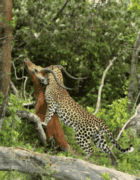|
Mike Mockler Kenya March 2018 |
THE MARA CONSERVANCIES (PRIVATE SAFARI) Flying into the bush airstrip, we could see how much rain had fallen recently. Vivid green vegetation stretched as far as the eye could see and the saturated plains were studded with pools of standing water that glinted in the sunlight as we flew over. Earlier that day, we had learned that a swollen river had made our first camp inaccessible so we were being diverted to a different camp. Even before touching down, the positive effects of the much-needed recent rain was obvious: wildebeest, zebra, Thomson's gazelles, Grant's gazelles, topi, eland and warthogs were grazing in big numbers near the airstrip. The herds contained many youngsters. As we drove the short distance to camp, we came across other herbivores including impalas, giraffes and a family group of elephants led by a magnificent matriarch with extraordinarily long tusks. As we settled into our spacious tent, we noticed how much wildlife was around the camp: impalas, wildebeest, zebras, dik-diks, rock hyrax and dwarf mongooses, along with an ever-changing cast of birds. March is well into the wet season, a time of year I love to be in Kenya. The rains bring many delights: booming wildlife numbers cashing in on the food bonanza; young animals taking their first steps as they explore their new green world; nesting birds transformed by their glorious new breeding plumage; millions of migrant birds passing through on their epic journeys. It is such a dynamic time of year and each game drive is an exciting, unpredictable adventure. Repeatedly, flocks of European bee-eaters passed low overhead, alerting us to their presence with their liquid, fluty calls. Parties of lesser kestrels soared and swooped in search of flying insects, many of them heading northwards en route to their breeding grounds. White storks, black storks, Eurasian rollers, red-backed shrikes, lesser grey shrikes, northern and Isabelline wheatears, willow warblers, spotted flycatchers, yellow wagtails, steppe eagles, Amur falcons, hobbys, Montagu's harriers, pallid harriers, European marsh harriers and Caspian plovers were just some of the species that were on the move or feeding in preparation for their long-haul flights north. Nocturnal sounds in and around the camp ensure that nights are as exciting as day-time game drives. I never tire of the sounds of hyenas yelping and whooping or the deeply resonant and far-carrying grunts of lions as they communicate with each other over great distances. Other sounds at night around the camp include donkey-like barking of zebras, the nasal honking of wildebeest and the splashing and munching of hippos and buffalos One night, we heard the repeated "sawing" of a leopard close to camp. I guessed it was Nalangu the local leopard making contact with her year-old female cub so, at first light, we drove out of camp and headed in the direction from which the calls had come. Within fifteen minutes, our Masai guide had found her. She was dragging the carcass of an adult male impala which she had recently killed, a heavy weight for a female leopard even though she had already eaten some of it. She was evidently looking for a suitable tree to cache her kill but walked past many that seemed ideal, at least to the human eye. Repeatedly she stopped to gulp air into her lungs, standing astride the kill: she appeared to be exhausted, not surprisingly as the male impala was considerably larger and heavier than her. At one point, a bull elephant took exception to the leopard and angrily charged her, trumpeting loudly, driving her away from her kill. However, leopards are renowned for their extreme patience so she draped herself across a nearby termite mound and waited until the elephant lost interest and ambled off. She then continued dragging the carcass, finally reaching a tree which she judged to be the right place to store the carcass. Panting heavily, she paused at the base of the tree, gripping the carcass in her teeth, and assessing the best way to climb the tree. After all her efforts, we wanted her to stow the kill safely but suddenly a hyena appeared nearby, intent on stealing her hard-won prize. Surely, she was too tired to take the heavy load up into the tree in time? Having watched leopards hundreds of times, I should have known better - they are such incredibly strong and resilient cats. In a golden blur, she was up the tree, pulling the impala between her legs and beneath her stomach, leaving a very disconsolate hyena below. Later the cub joined her mother in the tree and shared in the enormous feast. We met an elderly bull elephant with spectacular, long tusks. Ivory poaching is a vile scourge in many parts of Africa but, here in the Mara private conservancies, thankfully the massive bulls with fine tusks are relatively secure. In places where ivory poaching is prevalent, local elephants are visibly frightened, understandably unpredictable and potentially dangerous. It is tragic and upsetting when you meet such herds. Happily, elephants in the Masai Mara area are usually unbelievably relaxed, even when accompanied by small calves. Having said that, we did meet one bull who was heavily in musth and chased us in our vehicle for some distance across the plain! We enjoyed numerous encounters with lions, often with cubs. On one occasion, we watched them drinking from puddles after feeding on a kill, their bulging bellies almost touching the ground. One of the pride males is a magnificent specimen with a beautiful mane which is amber and gold around his head but black on his neck and chest. A large male leopard appeared one morning, an amorous suitor of Nalangu and father of some of her previous litters. On the second occasion we saw him we knew he was present only because of two lionesses. We saw them hurrying into a croton thicket and wondered what was happening. In fact, they had detected the presence of the male leopard who was feeding on a kill inside the thicket. We heard snarling and growling, followed by the leopard leaping up into a tall, spindly bush where we could see him. He perched there precariously and uncomfortably for some time while the lions fed on his kill - we weren't able to see them but we could hear the crunching of bones. He continuously scanned the surroundings for an escape route and a suitable tree to climb. Once he had decided what he was going to do, he jumped down to the ground and sprinted out of the thicket, pursued by the lions. They all went past our vehicle in a flash and soon the leopard was climbing a large tree with a straight trunk which the lions would not be able to climb. He stayed up there for some time: only when he was sure the lions had left did he nervously edge his way down to the ground. Our itinerary that had been disrupted because of heavy rain was now back on track for the rest of the trip. The rainy season brings sparkling clear air and scattered clouds, the perfect formula for stunning sunsets and sunrises. The green season is also the time when breeding birds are at their most active and have their most spectacular and colourful plumage. In a small wetland near camp, a pair of crowned cranes had a nest of eggs. Another wet area produced many waterbirds along with three species of widowbird, the males in their glorious breeding plumage: Jackson's, red-collared and yellow-mantled widowbirds. Diederek cuckoo, klaas' cuckoo, golden-winged sunbird and grey-capped warbler were regularly seen and heard. A cheetah mother known locally as Selenkei had given birth to 4 delightful little cubs. We spent several hours with them over three days, which was a rare privilege. Nevertheless, we grew increasingly concerned. Selenkei was an inexperienced mother and, on a daily basis, at least one cub became separated from the rest of the family. We were especially worried about the local lion pride that was just a few hundred yards away and would probably hear the repeated high-pitched calls of the cubs when lost. Furthermore, when Selenkei tried to hunt, the playful little cubs were always a problem for her as their antics caught the attention of the prey animals. As we left to start our journey back to England, we feared the worst for her family. Would they still be alive when I next returned to the conservancy in November? |
|
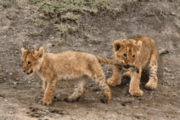
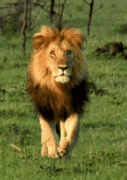
.gif)
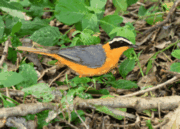
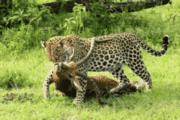
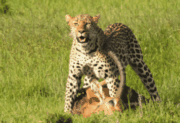
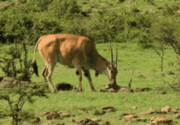
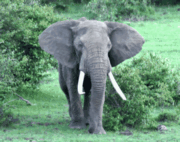

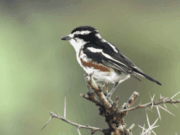
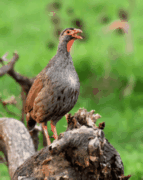

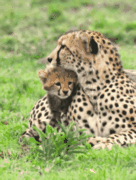
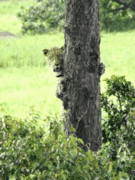

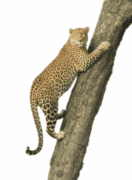
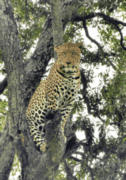
.gif)
